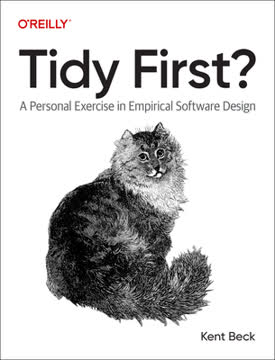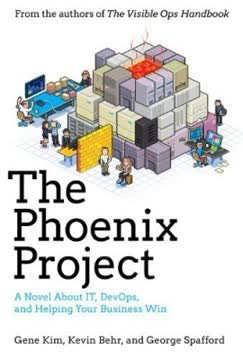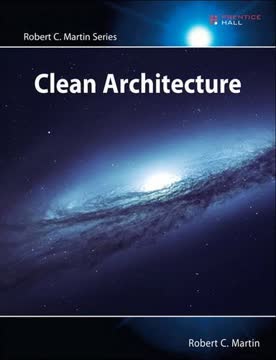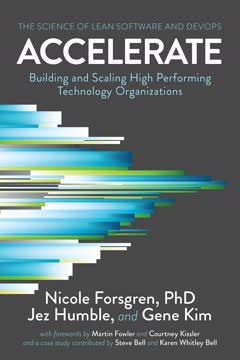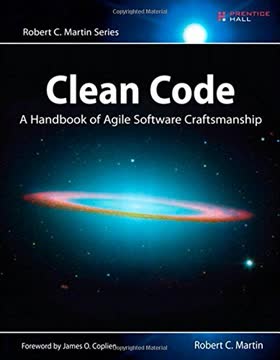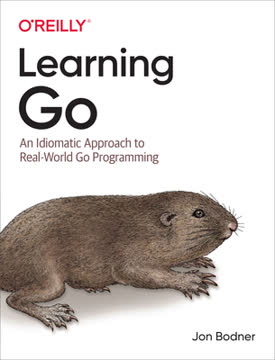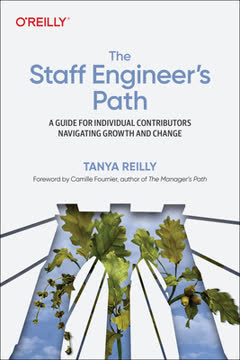가지 주요 요점
1. 쿠버네티스: 클라우드 네이티브 애플리케이션의 기초
쿠버네티스는 컨테이너 오케스트레이션 플랫폼으로, 그 위에 구축된 다른 플랫폼의 기초를 형성합니다.
분산 프리미티브. 쿠버네티스는 클라우드 네이티브 애플리케이션을 구축하기 위한 새로운 분산 프리미티브 세트를 도입합니다. 여기에는 컨테이너 그룹인 파드(Pods), 네트워킹 및 로드 밸런싱을 위한 서비스(Services), 애플리케이션 수명 주기를 관리하는 다양한 컨트롤러가 포함됩니다. 이러한 프리미티브는 전통적인 인프로세스 빌딩 블록에 비해 더 높은 수준의 추상화를 제공하여 개발자가 인프라 문제보다는 애플리케이션 로직에 집중할 수 있게 합니다.
선언적 접근 방식. 쿠버네티스는 개발자가 애플리케이션의 원하는 상태를 지정하고, 플랫폼이 지속적으로 그 상태를 유지하도록 하는 선언적 모델을 채택합니다. 이 접근 방식은 애플리케이션 관리를 단순화하고 자동화된 치유 및 확장을 가능하게 합니다. 주요 쿠버네티스 개념은 다음과 같습니다:
- 컨테이너: 애플리케이션 코드와 종속성을 패키징하고 격리된 단위
- 파드: 하나 이상의 컨테이너로 구성된 가장 작은 배포 단위
- 서비스: 파드 그룹에 접근하기 위한 안정적인 네트워크 엔드포인트
- 라벨과 주석: 리소스를 조직하고 선택하기 위한 메타데이터
- 네임스페이스: 리소스 격리 및 다중 테넌시를 위한 가상 클러스터
2. 기초 패턴: 컨테이너화된 앱의 빌딩 블록
완전히 자동화되기 위해 클라우드 네이티브 애플리케이션은 상태를 추론할 수 있도록 하여 쿠버네티스가 애플리케이션이 실행 중인지, 요청을 처리할 준비가 되었는지 감지할 수 있어야 합니다.
예측 가능한 요구. 애플리케이션은 리소스 요구 사항과 런타임 종속성을 선언해야 합니다. 이를 통해 쿠버네티스는 배치 및 확장에 대한 지능적인 결정을 내릴 수 있습니다. 주요 측면은 다음과 같습니다:
- 리소스 프로필: CPU 및 메모리 요청과 제한을 지정
- 품질 서비스(QoS) 클래스: Best-Effort, Burstable, Guaranteed
- 파드 우선순위: 파드의 상대적 중요도를 나타냄
선언적 배포. 쿠버네티스는 최소한의 다운타임으로 애플리케이션을 업데이트할 수 있는 메커니즘을 제공합니다:
- 롤링 업데이트: 오래된 파드를 새로운 파드로 점진적으로 교체
- 블루-그린 배포: 두 버전 간의 트래픽 전환
- 카나리 릴리스: 새로운 버전에 대한 트래픽을 점진적으로 증가
건강 프로브 및 관리 수명 주기. 애플리케이션은 건강 검사를 구현하고 수명 주기 이벤트에 응답해야 합니다:
- 생존 프로브: 애플리케이션이 실행 중인지 감지
- 준비 프로브: 애플리케이션이 트래픽을 처리할 준비가 되었는지 결정
- 수명 주기 훅: 시작 및 중지 이벤트에 응답
3. 행동 패턴: 파드 관리 및 서비스 디스커버리
싱글톤 서비스 패턴은 애플리케이션의 인스턴스가 한 번에 하나만 활성화되도록 하면서도 높은 가용성을 보장합니다.
작업 관리. 쿠버네티스는 다양한 유형의 워크로드를 관리하기 위한 추상화를 제공합니다:
- 배치 작업: 유한하고 완료 가능한 작업 실행
- 주기적 작업(CronJobs): 예약된 반복 작업
- 데몬 서비스: 모든 노드에서 시스템 수준 서비스를 실행
상태 저장 서비스. 쿠버네티스는 안정적인 네트워크 ID와 지속적인 스토리지가 필요한 애플리케이션을 관리하기 위해 StatefulSets를 제공합니다:
- 순차적 배포 및 확장
- 안정적인 네트워크 ID
- 파드당 지속적인 스토리지
서비스 디스커버리. 쿠버네티스는 여러 가지 서비스 디스커버리 메커니즘을 제공합니다:
- 클러스터IP 서비스: 내부 통신용
- 노드포트 및 로드밸런서 서비스: 외부 접근용
- 인그레스: HTTP 기반 라우팅 및 로드 밸런싱
4. 구조적 패턴: 파드 내 컨테이너 조직
사이드카 컨테이너는 기존 컨테이너의 기능을 변경하지 않고 확장하고 향상시킵니다.
다중 컨테이너 파드. 쿠버네티스는 여러 컨테이너를 단일 파드로 그룹화할 수 있어 다양한 패턴을 가능하게 합니다:
- 초기화 컨테이너: 메인 컨테이너 시작 전에 초기화 작업 수행
- 사이드카: 메인 컨테이너에 기능 추가
- 어댑터: 이질적인 애플리케이션의 출력을 표준화
- 앰배서더: 외부 서비스와의 통신 프록시
이러한 패턴은 관심사의 분리, 모듈성 및 재사용성을 촉진합니다. 개발자는 파드 추상화가 제공하는 공유 컨텍스트와 리소스를 활용하여 단순하고 단일 목적의 컨테이너로 복잡한 애플리케이션을 구성할 수 있습니다.
5. 구성 패턴: 다양한 환경에 맞춘 애플리케이션 적응
ConfigMaps와 Secrets는 쿠버네티스 API로 쉽게 관리할 수 있는 전용 리소스 객체에 구성 정보를 저장할 수 있게 합니다.
외부화된 구성. 쿠버네티스는 애플리케이션 구성을 관리하기 위한 여러 메커니즘을 제공합니다:
- 환경 변수: 간단한 키-값 쌍
- ConfigMaps: 민감하지 않은 구성 데이터
- Secrets: 비밀번호, API 키 등 민감한 정보
불변 구성. 환경 간 일관성을 보장하기 위해 구성은 불변 컨테이너 이미지로 패키징될 수 있습니다:
- 구성 컨테이너: 구성 데이터를 저장하기 위한 전용 이미지
- 초기화 컨테이너: 공유 볼륨에 구성을 복사
구성 템플릿. 환경 간 약간씩 다른 복잡한 구성을 위해:
- 템플릿 처리: Gomplate와 같은 도구를 사용하여 구성 파일 생성
- 초기화 컨테이너: 파드 초기화 중 템플릿 처리
이러한 패턴은 개발자가 애플리케이션 코드와 구성을 분리하여 이식성을 촉진하고 환경별 문제의 위험을 줄일 수 있게 합니다.
6. 고급 패턴: 쿠버네티스 확장 및 복잡한 워크로드 관리
오퍼레이터는 쿠버네티스와 다른 도메인을 이해하는 쿠버네티스 컨트롤러입니다. 두 영역에 대한 지식을 결합하여 일반적으로 두 도메인을 이해하는 인간 운영자가 필요한 작업을 자동화할 수 있습니다.
컨트롤러와 오퍼레이터. 쿠버네티스는 복잡한 애플리케이션을 관리하기 위해 확장될 수 있습니다:
- 컨트롤러: 리소스 변경에 기반한 사용자 정의 동작 구현
- 오퍼레이터: 도메인별 지식을 인코딩하고 복잡한 작업 자동화
- 사용자 정의 리소스 정의(CRD): 새로운 리소스 유형 정의
프레임워크와 도구. 여러 프로젝트가 컨트롤러와 오퍼레이터 개발을 용이하게 합니다:
- 오퍼레이터 프레임워크: Go 기반 오퍼레이터 구축
- 쿠베빌더: 오퍼레이터 프로젝트 스캐폴딩 및 관리
- 메타컨트롤러: 모든 언어로 오퍼레이터 구현
이러한 패턴은 개발자가 쿠버네티스의 기능을 확장하고 클러스터 내에서 복잡하고 애플리케이션별 작업을 자동화할 수 있게 합니다.
7. 확장 및 빌딩: 탄력적인 애플리케이션 및 클러스터 내 이미지 생성
쿠버네티스의 자동 확장은 고정된 용량이 아닌 다양한 애플리케이션 용량을 정의할 수 있게 하여 다른 부하를 처리하기에 충분한 용량을 보장합니다.
탄력적 확장. 쿠버네티스는 애플리케이션을 확장하기 위한 여러 메커니즘을 제공합니다:
- 수평 파드 자동 확장(HPA): 파드 복제본 수 조정
- 수직 파드 자동 확장(VPA): 리소스 요청 및 제한 수정
- 클러스터 자동 확장: 리소스 수요에 따라 노드 추가 또는 제거
이미지 빌딩. 쿠버네티스를 사용하여 클러스터 내에서 컨테이너 이미지를 빌드할 수 있습니다:
- 오픈시프트 빌드: 다양한 전략을 사용한 통합 이미지 빌드 시스템
- Knative 빌드: 쿠버네티스 네이티브 빌드 프레임워크
- 데몬리스 빌드: img, buildah, Kaniko와 같은 루트리스 이미지 생성 도구
이러한 패턴은 개발자가 탄력적이고 자체 조정 가능한 애플리케이션을 만들고 쿠버네티스의 스케줄링 및 리소스 관리 기능을 활용하여 이미지 빌드 프로세스를 간소화할 수 있게 합니다.
마지막 업데이트 날짜:
FAQ
What's Kubernetes Patterns about?
- Focus on Cloud-Native Applications: Kubernetes Patterns by Bilgin Ibryam and Roland Huß is a guide to designing cloud-native applications using Kubernetes, emphasizing scalable, resilient, and manageable applications.
- Reusable Design Elements: The book highlights reusable elements for application design, offering practical solutions to common deployment challenges on Kubernetes.
- Real-World Use Cases: It draws from real-world experiences to illustrate effective application of patterns, making it valuable for both new and experienced Kubernetes users.
Why should I read Kubernetes Patterns?
- Enhance Kubernetes Skills: Ideal for developers aiming to deepen their understanding of Kubernetes and improve application design skills with best practices and proven patterns.
- Learn from Experts: Written by experienced practitioners, it encapsulates lessons from various projects, providing readers with extensive knowledge in cloud-native application design.
- Practical Guidance: The patterns are actionable and applicable to real-world scenarios, serving as a practical guide for cloud-native development.
What are the key takeaways of Kubernetes Patterns?
- Understanding Kubernetes Concepts: Covers essential concepts like Pods, Services, and Deployments, providing a solid foundation for building robust applications.
- Design Patterns for Apps: Introduces patterns like Predictable Demands and Health Probes, crucial for creating scalable and maintainable applications.
- Advanced Topics: Delves into advanced patterns like Operators and Controllers, essential for extending Kubernetes functionality and managing complex applications.
What are the foundational patterns discussed in Kubernetes Patterns?
- Predictable Demands: Emphasizes declaring resource requirements for containers to help Kubernetes make informed scheduling decisions.
- Declarative Deployment: Focuses on deployment strategies like Rolling Updates and Blue-Green Deployments for managing application updates with minimal downtime.
- Health Probes: Discusses implementing liveness and readiness probes for monitoring application health, ensuring only healthy instances serve traffic.
How does Kubernetes Patterns define a Job and its purpose?
- Batch Job Definition: A Job manages the execution of Pods until a specified number successfully terminate, designed for finite tasks needing reliable completion.
- Reliability and Scalability: Ensures tasks are executed to completion by automatically restarting Pods as needed, suitable for data processing or batch jobs.
- Parallel Execution: Jobs can run multiple Pods in parallel, allowing efficient processing of tasks divided into smaller, independent units.
What is the significance of the DaemonSet pattern in Kubernetes Patterns?
- Infrastructure-Focused Pods: Deploys Pods on every node or specific subsets, providing essential infrastructure services like logging or monitoring.
- Automatic Management: Manages the lifecycle of Pods automatically, simplifying infrastructure service management in a Kubernetes cluster.
- Node-Specific Operations: Useful for applications needing node-specific operations, such as accessing local storage or monitoring node health.
How does Kubernetes Patterns explain the Singleton Service pattern?
- Single Active Instance: Ensures only one instance of a service is active, crucial for tasks like scheduled jobs or message processing.
- High Availability: Maintains a single active instance while emphasizing high availability using controllers like StatefulSets or ReplicaSets.
- Service Discovery: Uses headless Services for stable network identities, ensuring consistent access to the singleton service.
What are the advanced patterns covered in Kubernetes Patterns?
- Operators: Extends Kubernetes functionality by managing complex applications through custom controllers, automating deployment and scaling.
- Elastic Scale: Discusses horizontal and vertical scaling strategies, using features like Horizontal Pod Autoscaling for dynamic resource adjustment.
- Image Builder: Focuses on creating container images within the Kubernetes cluster, enhancing efficiency and reducing complexity.
What is the Downward API in Kubernetes Patterns?
- Metadata Injection: Allows Kubernetes to inject Pod metadata into applications as environment variables or files, promoting self-awareness.
- Dynamic and Static Data: Provides dynamic data like Pod IP and static data like resource limits, crucial for logging and monitoring.
- Kubernetes-Agnostic Applications: Enables applications to remain agnostic to Kubernetes, promoting portability and reusability.
How does the Init Container pattern work in Kubernetes Patterns?
- Separation of Concerns: Allows initialization tasks to be separated from main application containers, handling tasks like setting up permissions independently.
- Sequential Execution: Init Containers run in sequence, ensuring each completes before the next starts, guaranteeing readiness for the main application.
- Resource Sharing: Shares network namespace and storage volumes with application containers, simplifying environment preparation.
What is the Sidecar pattern in Kubernetes Patterns?
- Enhancing Functionality: Involves adding a secondary container to a Pod to enhance or extend the primary container's functionality.
- Common Use Cases: Used for logging, monitoring, or proxying requests, allowing the main application to focus on core functionality.
- Collaboration Between Containers: Facilitates resource sharing and communication within the same Pod, leading to efficient applications.
How does Horizontal Pod Autoscaling work in Kubernetes Patterns?
- Dynamic Scaling: Automatically adjusts Pod replicas based on CPU utilization or other metrics, ensuring applications handle varying loads.
- Configuration Requirements: Requires defined resource requests and a running metrics server for informed scaling decisions.
- Continuous Monitoring: Monitors specified metrics and adjusts replicas, maintaining optimal resource utilization and performance.
리뷰
Kubernetes Patterns는 대체로 긍정적인 평가를 받고 있으며, 독자들은 흥미로운 내용, 명확한 구조, 실용적인 예시를 칭찬하고 있다. 많은 이들이 Kubernetes 개념과 모범 사례를 이해하는 데 유용하다고 생각한다. 일부 리뷰어들은 책의 패턴 설명 접근 방식을 높이 평가하는 반면, 다른 이들은 특정 "패턴"이 기본적인 Kubernetes 기능에 불과하다고 느낀다. 이 책은 Kubernetes에 대한 깊은 지식을 추구하는 개발자와 시스템 관리자에게 추천되지만, 경험이 많은 실무자에게는 그다지 유용하지 않을 수 있다. 전반적으로, 클라우드 네이티브 애플리케이션을 구축하는 데 도움이 되는 유용한 자료로 간주된다.
Similar Books
